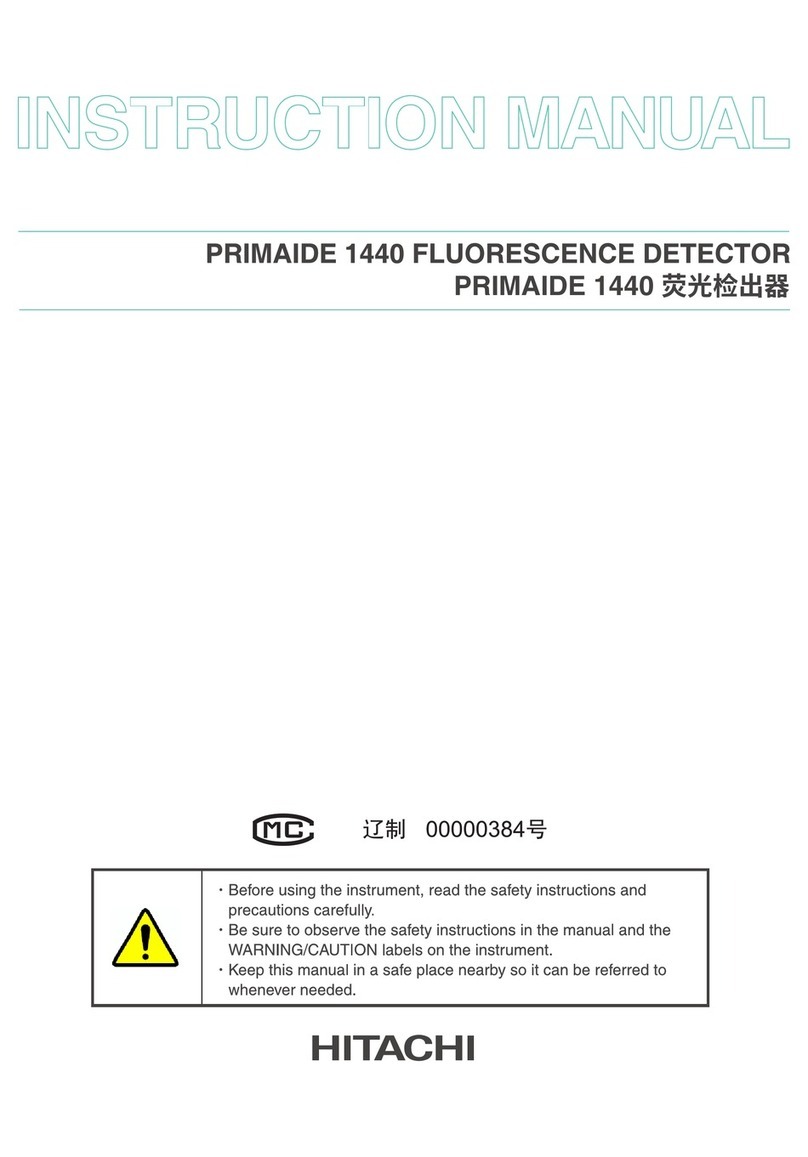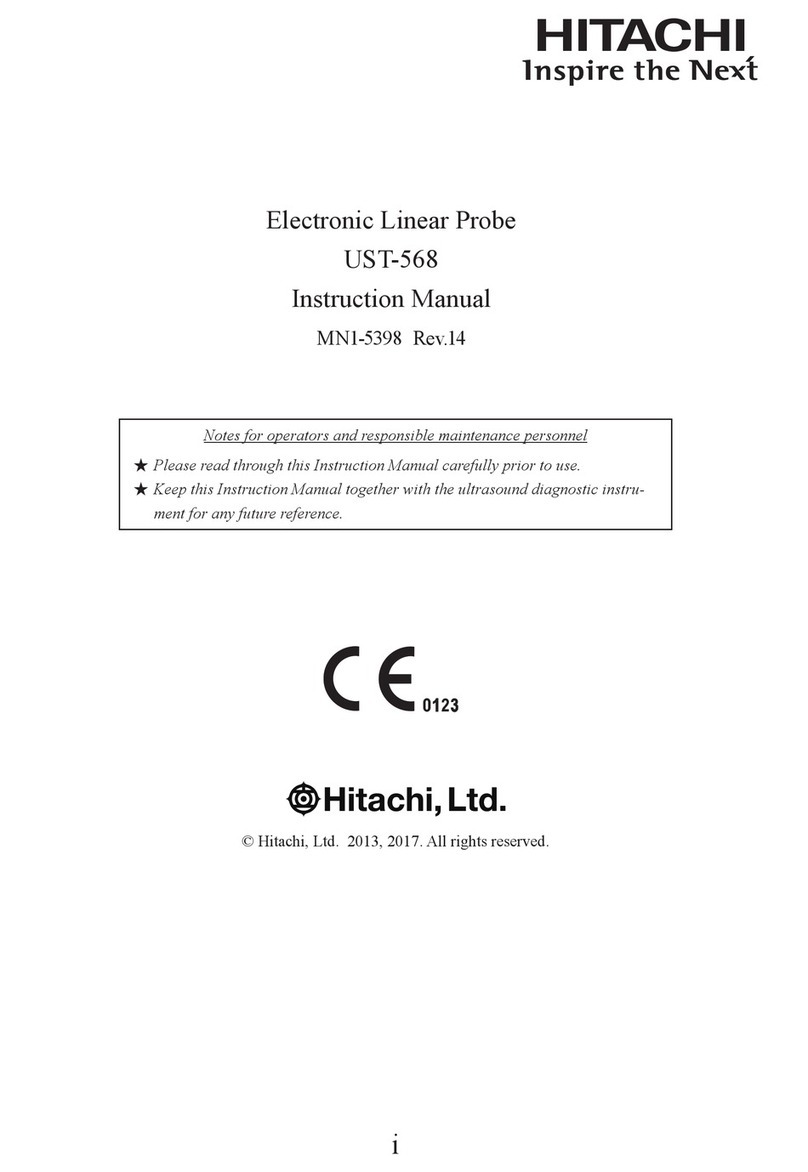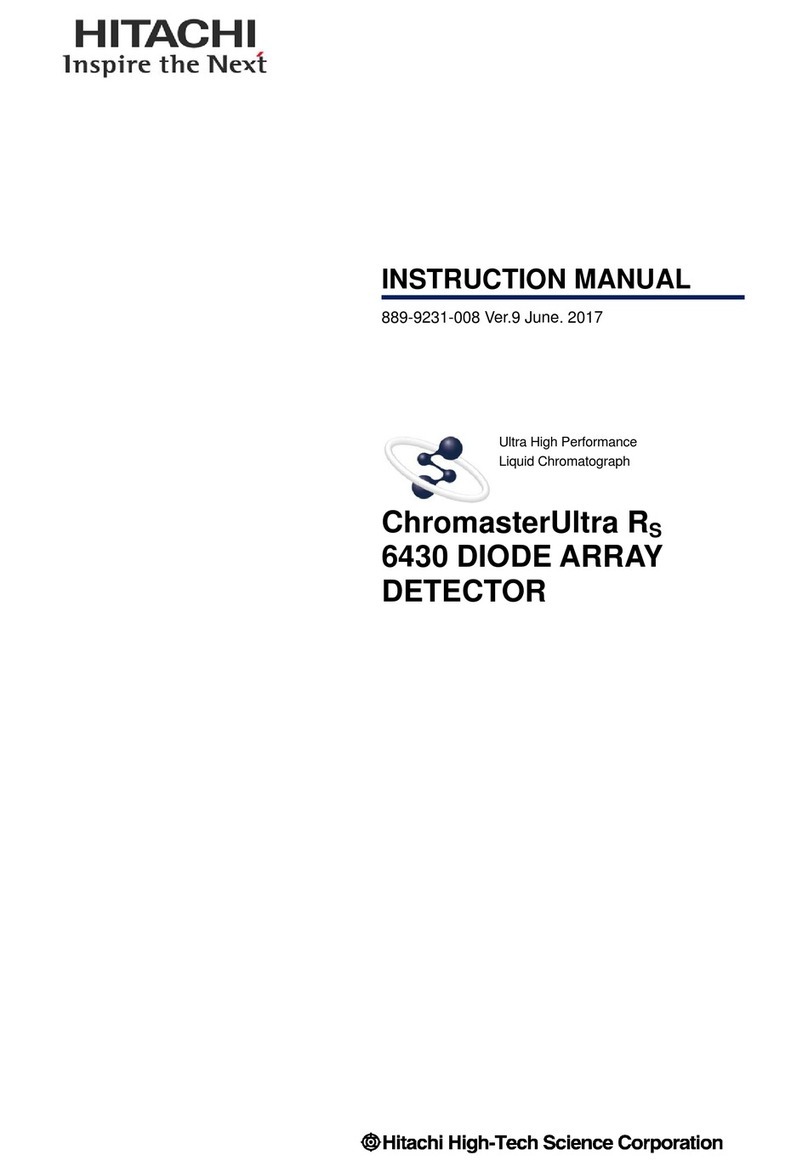
-4- Q1E-EP0415
3. Operation Procedure
1) Confirm that the probe is disinfected and sterilized.
2) When connecting probe to or removing it from the scanner, the power
of scanner should be put “OFF” without fail.
3) Connect the probe, operate the main unit, and adjust the image
according to the instructions given in the operation manual for the
main unit.
4) Relationship between direction of the probe and the image is shown
in Fig.2. The right-left orientation mark on the image indicates the
direction of the cable side of the probe.
5) Under sterile condition, protecting the probe by using covers is
strongly recommend. Some Latex material may create allergic reaction.
Please use allergy free material covers.
6) After use of the probe, it should be cleaned and disinfected and
sterilized, then store it in an adequate place.
1) Acoustic jelly attached to the scanner as one of accessories is not
sterilized. So, in case the probe is to be used during the surgical
operation or in body cavities, never apply that jelly to the probe.
2) In case the probe is to be used during the surgical operation, we
recommend you to use a sterilized probe cover in order to minimize
sticking of body fluid to the probe. Apply sterilized jelly to the
probe, and then put the probe cover on the probe head. Tightly contact
the probe head with the probe cover.
Fig. 2 Relationship between the directions of the
probe and the Right-left orientation mark
Right-left
orientation mark
able side
CAUTION































